
Back to Denia castle
I visited Denia’s castle three weeks ago on my first full day here. Although it was an interesting visit, all the signage and information boards were in Spanish and mine, to my shame, which I intend to correct, doesn’t go beyond the basics of greetings, please and thank yous, and ‘una cerveza por favor’.
This time I’d read up and arrived with information provided in a little book all about it, given to me by a very helpful woman in the tourist information office, who made me promise not to tell anyone where I’d got it. I think it might even have been hers.
She spoke Spanish, English, German and French and was just what you want in an information provider. She seemed to know everything about the many things I’d asked and darted about her office retrieving leaflets and info sheets, all delivered with a smile, clearly in love with her job.
I’d felt like tipping her she was so good, which would have been weird. I settled instead for high praise and rapid fire muchas gracias, which made her raise her arms in the air then lower them, clasping her hands together as if she was about to clap. Her name was Leticia, the meaning of which I looked up later. It’s ‘a person who spreads joy and happiness’. The world needs more Leticias.
Armed with all the information in Leticia’s book I was able to make some sense of what I’d seen on my first visit, which was the castle’s mish mash of architectural styles. Apparently, although its fortifications are of Moorish Andalus origin, fragments of sculptures and stones within its walls span several centuries, with many from Roman buildings. These would have been built during a period when Dianivm, as the town was then known, was a municipium, in effect an Italian town. It would then have had local rights of self-government and afforded its inhabitants some of the privileges of Roman citizenship.
And there was the Taifa of Dénia, an Islamic kingdom that ruled the area, including the Balearic Islands and parts of the Spanish mainland, with Denia as its capital. It was founded in 1010 by Mujahid al-Amiri after the disintegration of the Caliphate of Córdoba. During this period the castle’s fortification took on the form of an alcazaba, a Moorish fortress.
The taifa also had an influential Sephardic Jewish community, with many of its population holding top positions in the government of the taifa. Mujahid al-Amiri was a patron of several intellectuals and worked with the Jewish mercantile community, protecting them in exchange for their declaration of loyalty,
All these archeological and architectural remains indicate that the castle and its slopes have sheltered inhabitants for over two thousand years. But genning up on and blogging (incidentally, I hate that word), the entirety of the castle’s history isn’t for me. I’m a scratcher of surfaces and this is a blog of an online diary (better), comprising a bit of info and a scattering of impressions.
After an hour or so of wandering around the castle trying to make sense of it all, though very enjoyable and aided hugely by Leticia’s little book, I’m going to home in on the things that pleased me the most. There are only really two, although there were plenty of also rans that almost made the grade.
The first is graffiti. In 1984, a project known as ‘Los graffiti medievales del castell de Dénia’, undertook a systematic cataloging of marks on the external walls and towers of the castle.
It found inscriptions depicting various maritime subjects, such as the art of navigation, all scratched where the taggers could reach on the lower parts of the walls overlooking the harbour and sea. Over the years walls were often remodelled to make them stronger or to add height. and then covered with strong plastering or mortar. These areas formed the taggers’ canvas.
Much of their work featured the huge range of vessels that sailed along the coast of Denia, many entering the harbour to deliver goods or to top up on provisions. Perhaps sometimes it was just a port in a storm. There were galleys, tartanes, Catalan boats, and sometimes pirate ships, all crucial to Denia’s fortunes back then, although no doubt the latter weren’t always welcome. The graffiti pictured below took my fancy, which is of a 14th century galley, a ship propelled by sails and oars that must have passed through Denia’s waters over six hundred years ago.
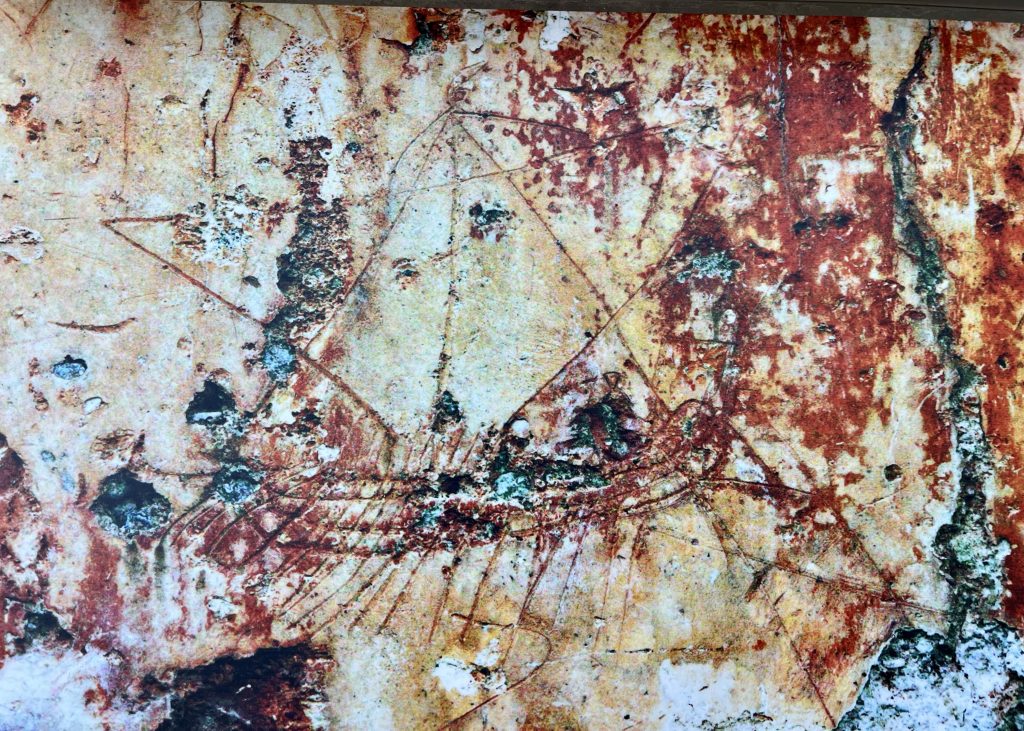
The second delight was prompted by an information overload from Denia’s Iberian, Roman, Muslim and Christian ages. It’s a lot to take in. In the end it’s just the sheer, simple beauty of this place that I’ll take with me, which I hope might be reflected in the pictures below and elsewhere in my online diary (a bit of a mouthful?)
When I head home in just a few days, to a very different place, it’s these impressions that will stay with me. The many generations who’ve lived and left their mark here over such vast swathes of time. They rowed galleys and sailed all around this big blue Mediterranean sea, an area of over 900,000 square miles. It’s quite something.
Here are some pictures.

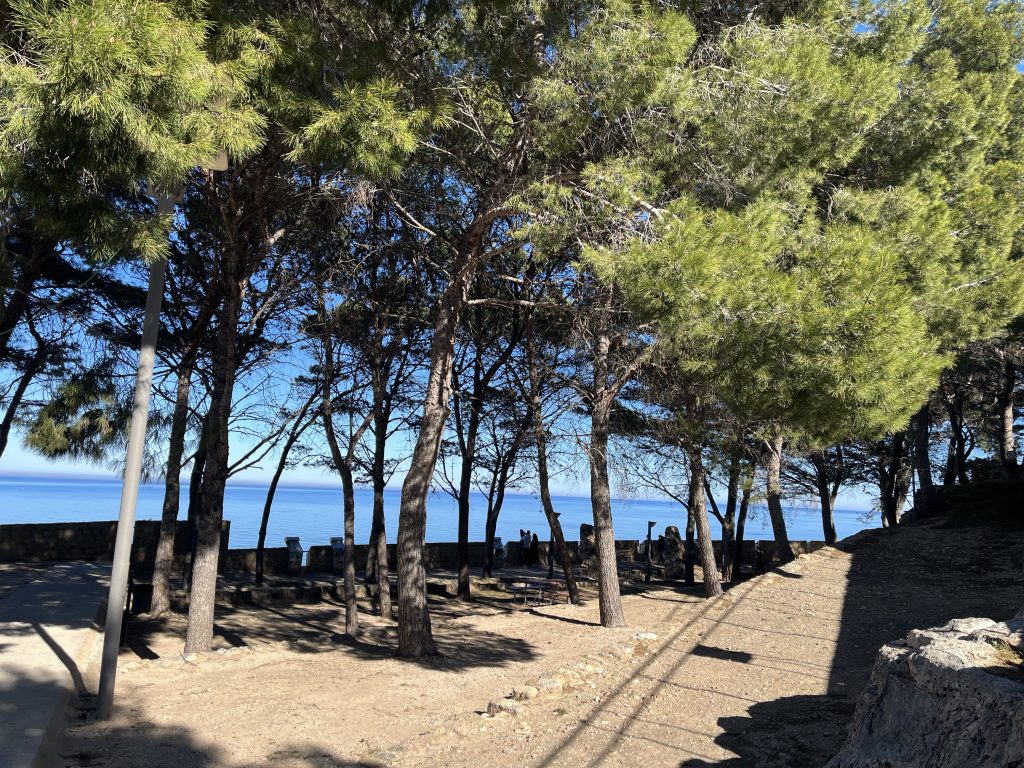
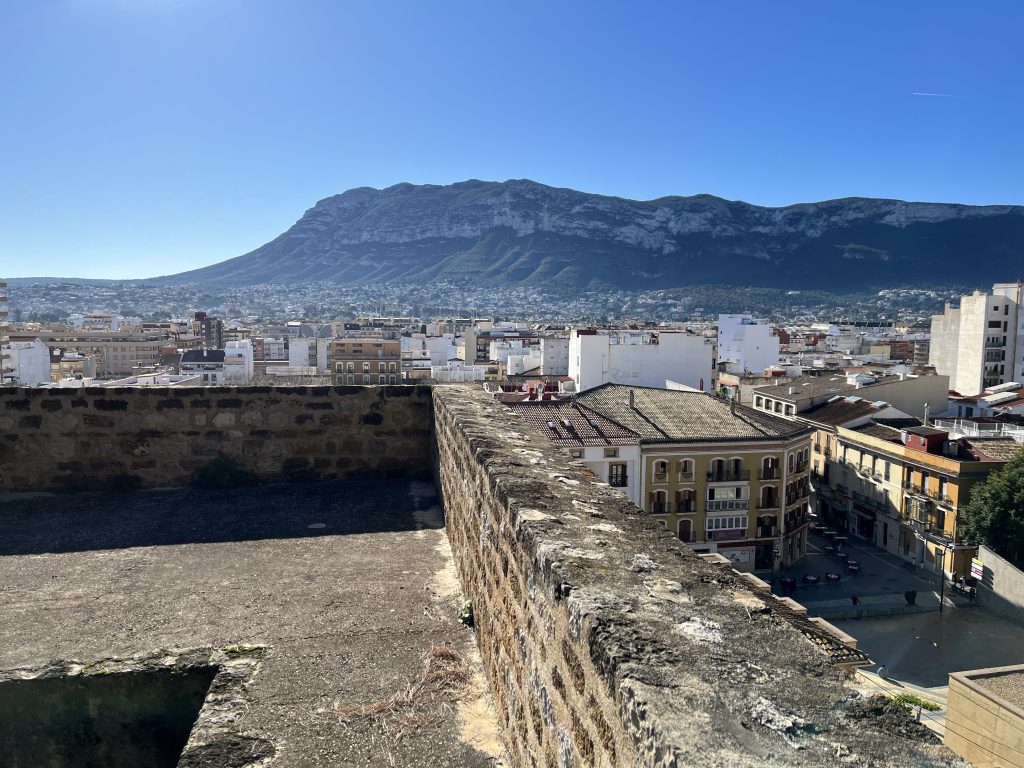
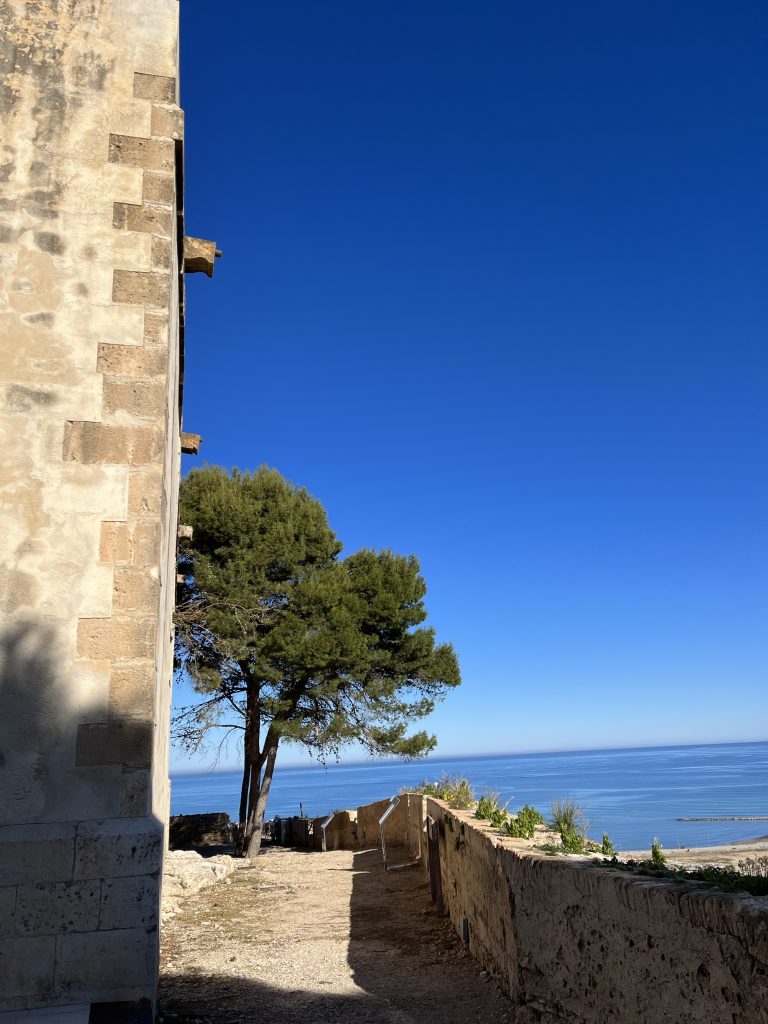
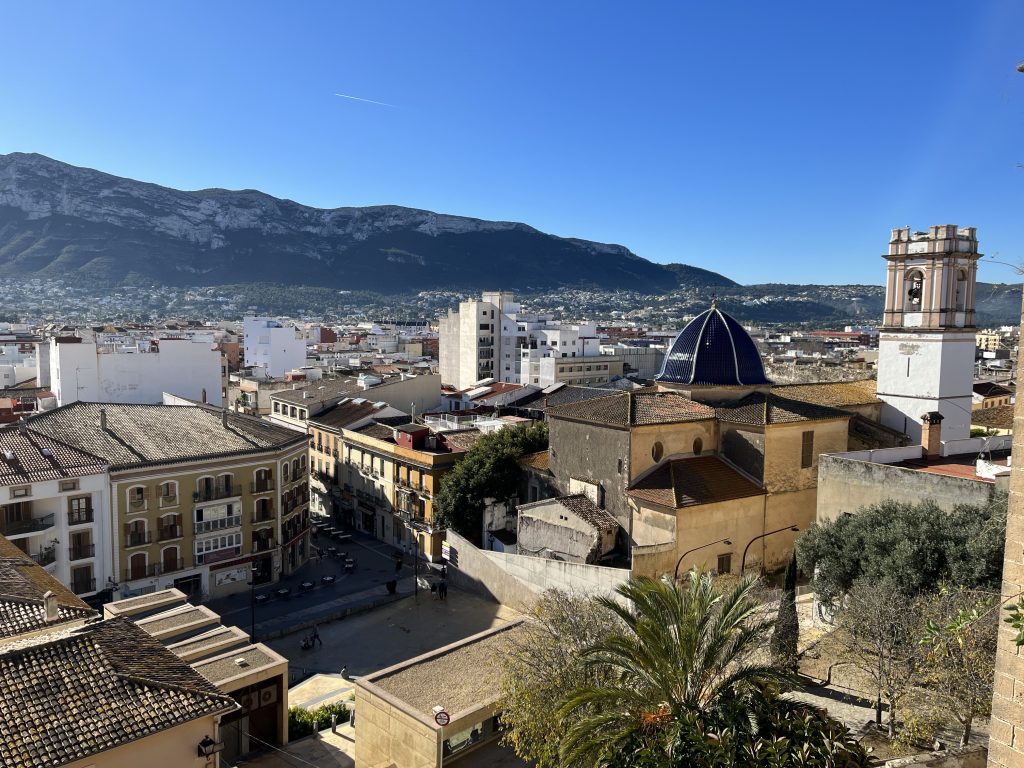
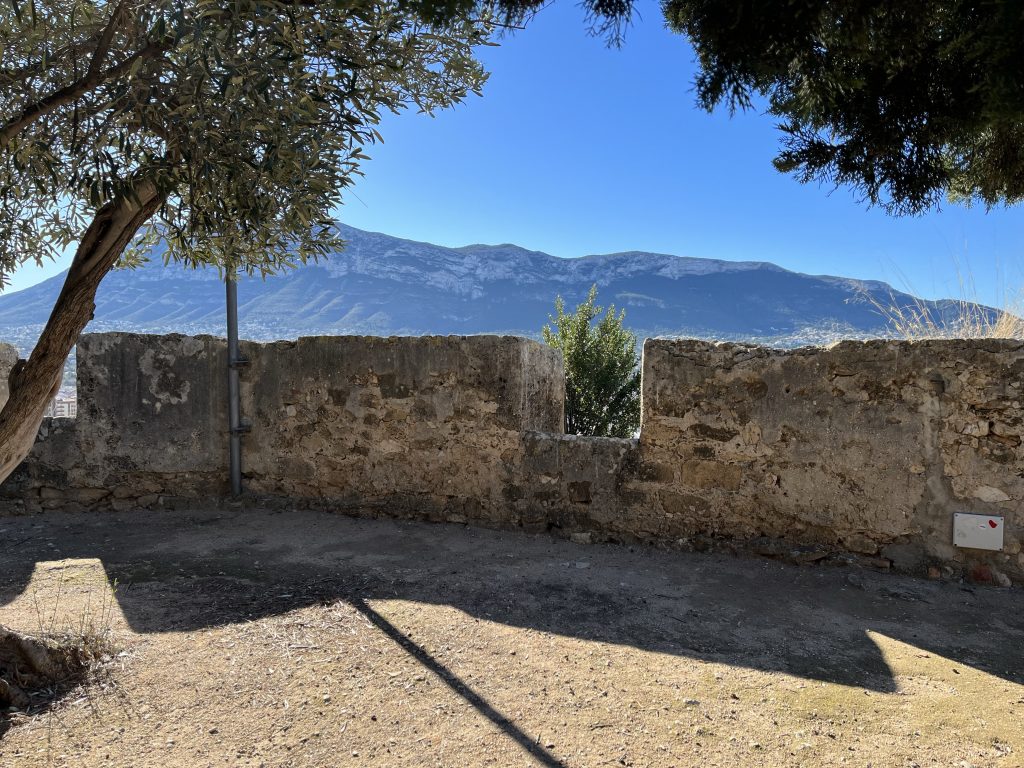
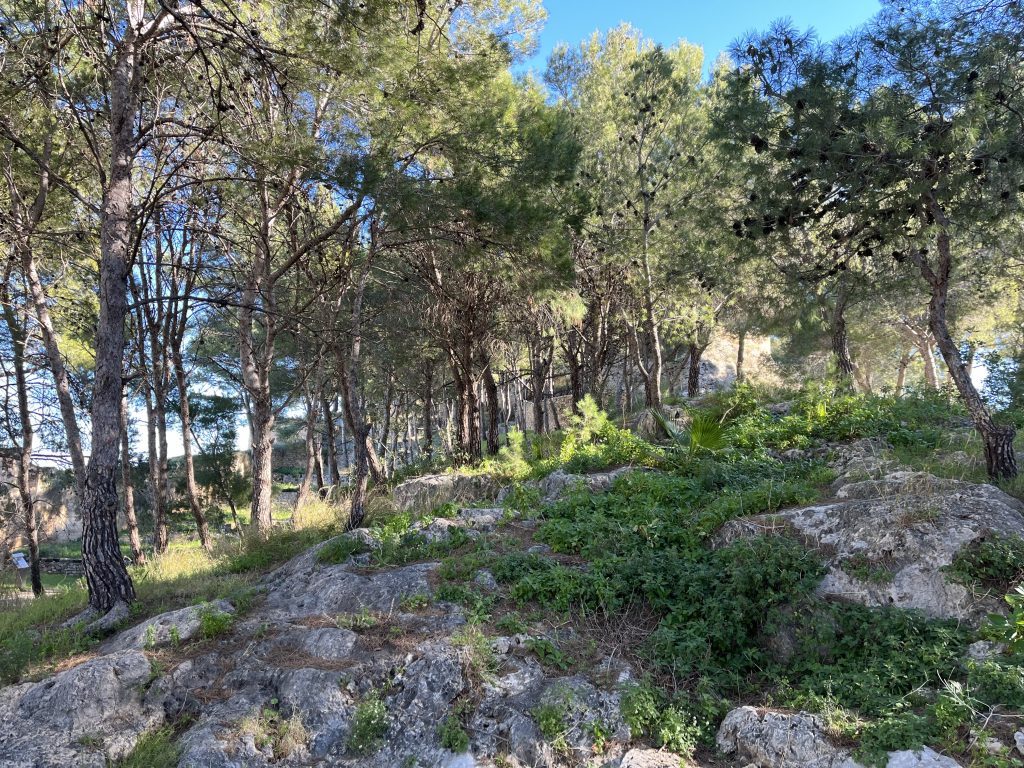
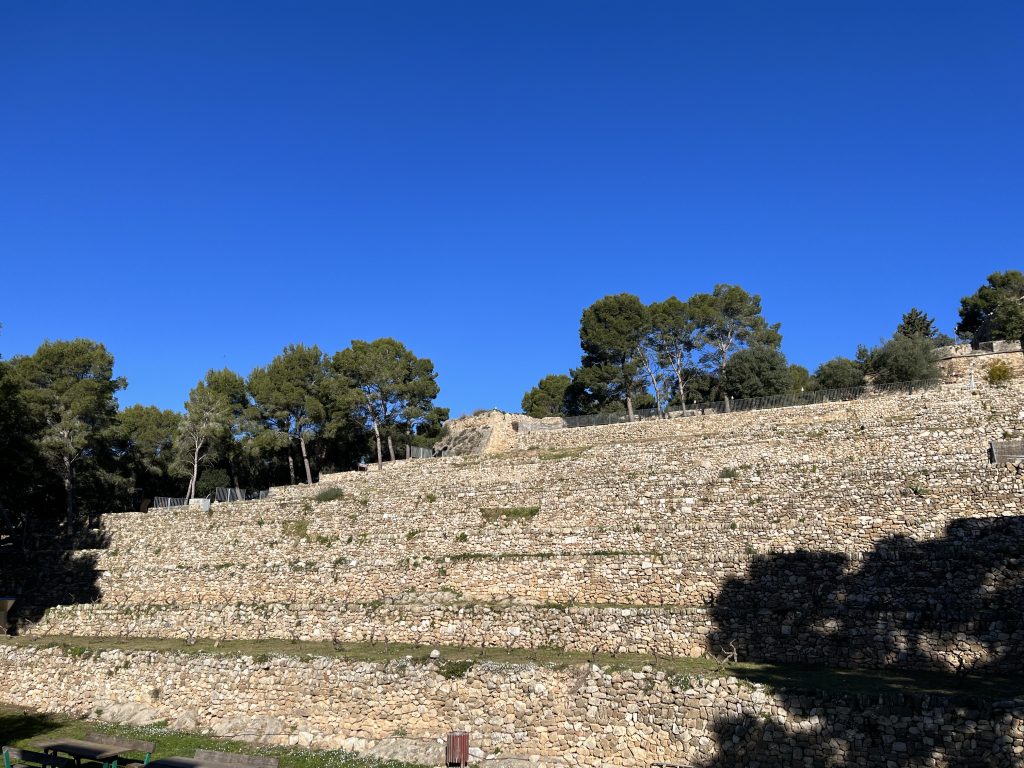
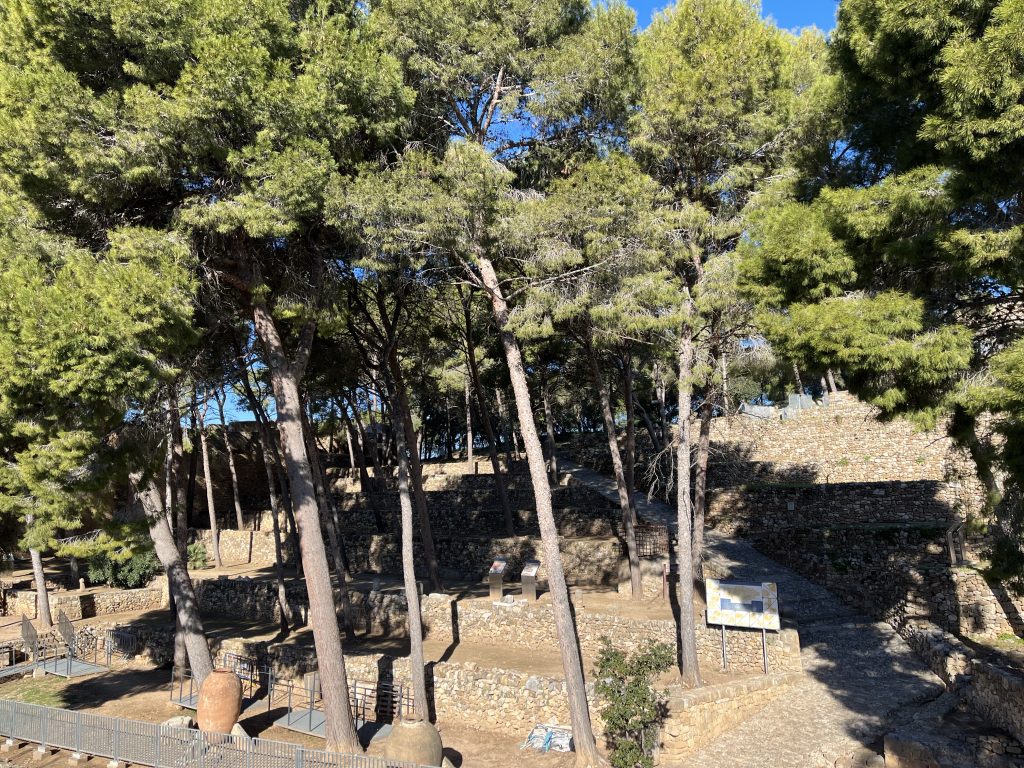
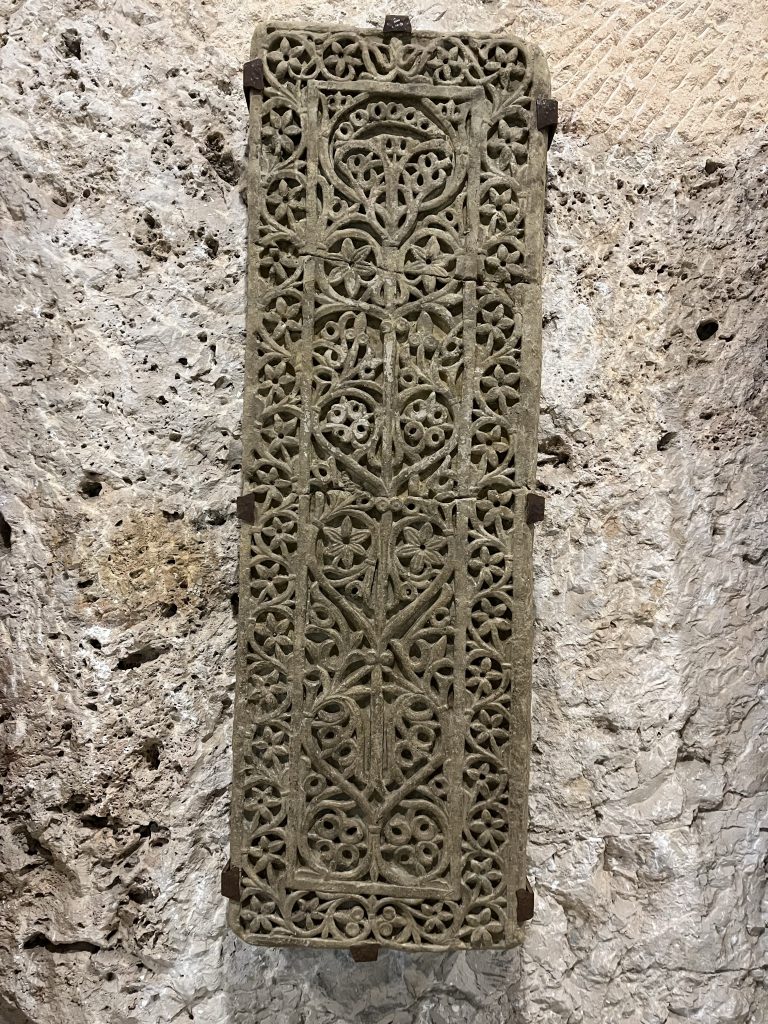
Footnote
Leticia
A chunk of this post isn’t about the castle at all. It’s about the lovely Leticia. She should really be up there with my other two highlights. In fact, she now is. People like her really do ‘spread joy and happiness’, even without a name to match, and need to be promoted to high office. Her little book helped me find my way around this time. For what it’s worth (not much really), my castle post is dedicated to her and to Leticia-like people everywhere. In fact, when I get home I think I’ll find out who her boss is and drop them a line and tell them never to let her go.
(For the avoidance of doubt, no, I don’t have the hots for Leticia. I liked her, that’s all. Honestly – some people?)
Bins
Nothing to do with the castle but on my walk back through Denia’s beautifully clean streets, where there’s an abundance of zebra crossings at which cars always give way, I passed these bins. I’ve seen them in France too and they’re such a great idea. Instead of dirty old skips and grubby bottle banks, here they bury them underground and keep them clean. When they’re full they just lift the lid and swap them for an empty one. Why can’t we do this in Blighty?

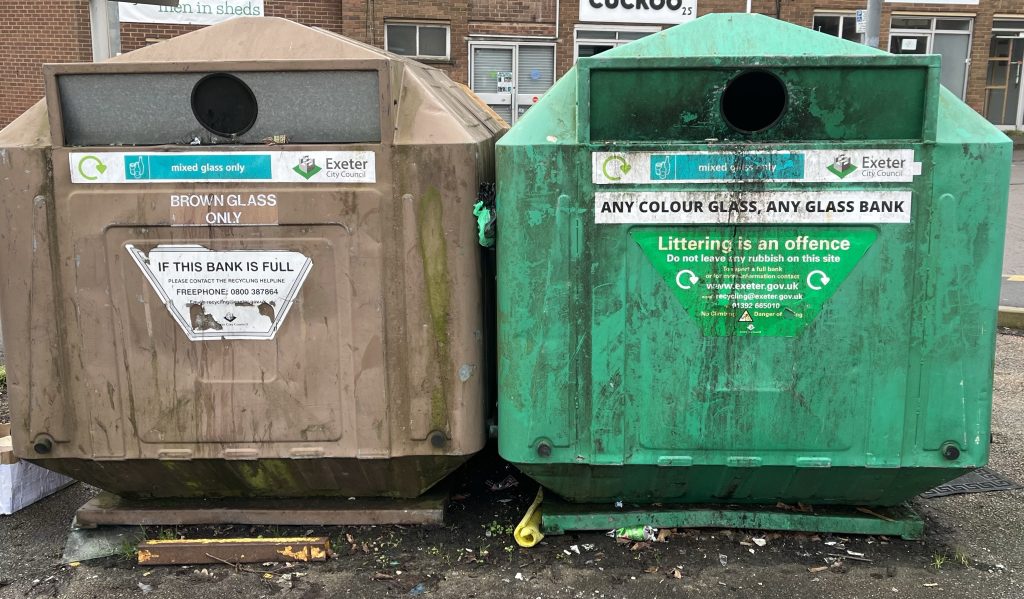
Zebra crossings
Cars are obliged to give way to pedestrians here and at home. It’s the law. Literally everyone stops here but not everyone does back home. Why?
I’ve only seen one or two cops in a month of being here, both of them on foot, rather than cruising the streets in BMWs like at home. One was marshalling a Sunday afternoon fiesta where people were all dressed up in old costumes (pic below). He helpfully dropped everything to radio through to his control room when I asked if he knew where there was a pharmacy open (root canal trouble).
I’ve seen no evidence of the police actively policing crossings, or having much of a presence at all, although perhaps they do from time to time. Maybe it’s just that Spanish people are simply more considerate and/or law-abiding? In Denia they certainly are, and very friendly too. I bet Leticia would know the answer.
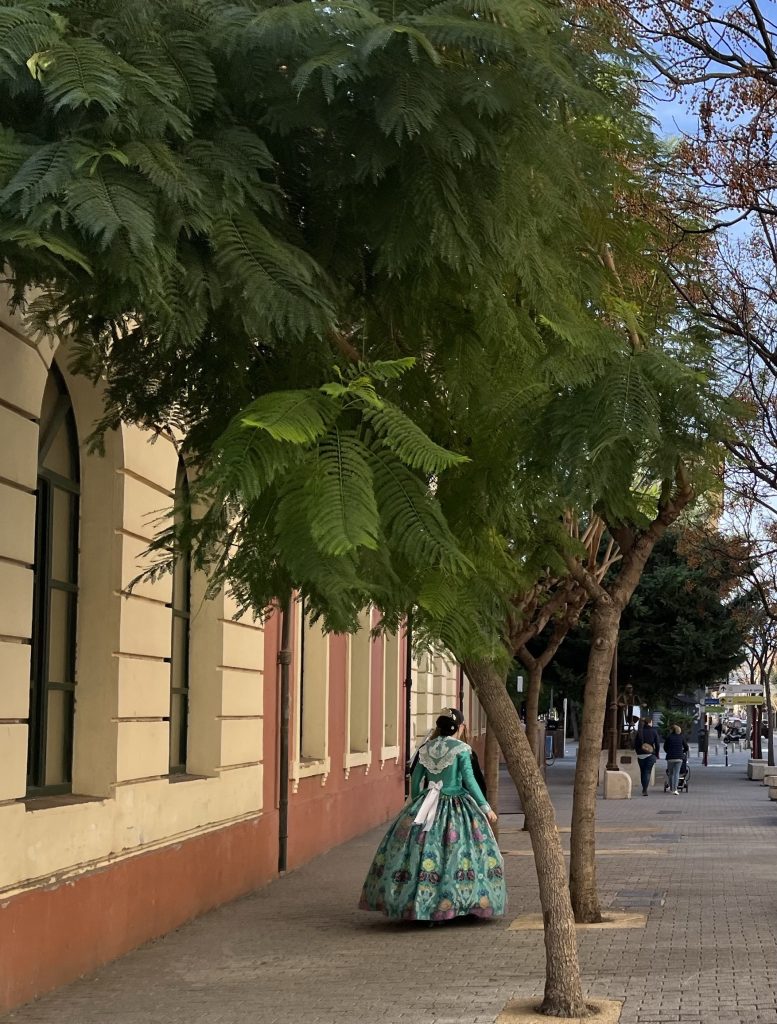
the skies are so blue and the air appears to be free of any pollution.
Your lungs have got to be happy over there.
Nothing but blue skies,,,
My month here’s nearly up and that clear blue sky’s one of the things I’ll miss the most. There have only been two or three days when it’s been hidden away, and even then only for a few hours. Tomorrow’s forecast to be one of them but at least it’ll get me used to what lies in store when I head for home on Tuesday. Minus 2° in Exeter that night 🥶. Hope all’s well in the sunshine state!
Great blog Andy, loved Montgo (and Leticia). Have a safe trip back …….
Thanks Jim. Look fwd to seeing you and Brigitta in March
Well, what am I gonna read now? Have to get back to my grim novel..